I teared up before the keynote had even begun. I've attended over 35 STEM conferences, but none impacted me like NDiSTEM SACNAS.
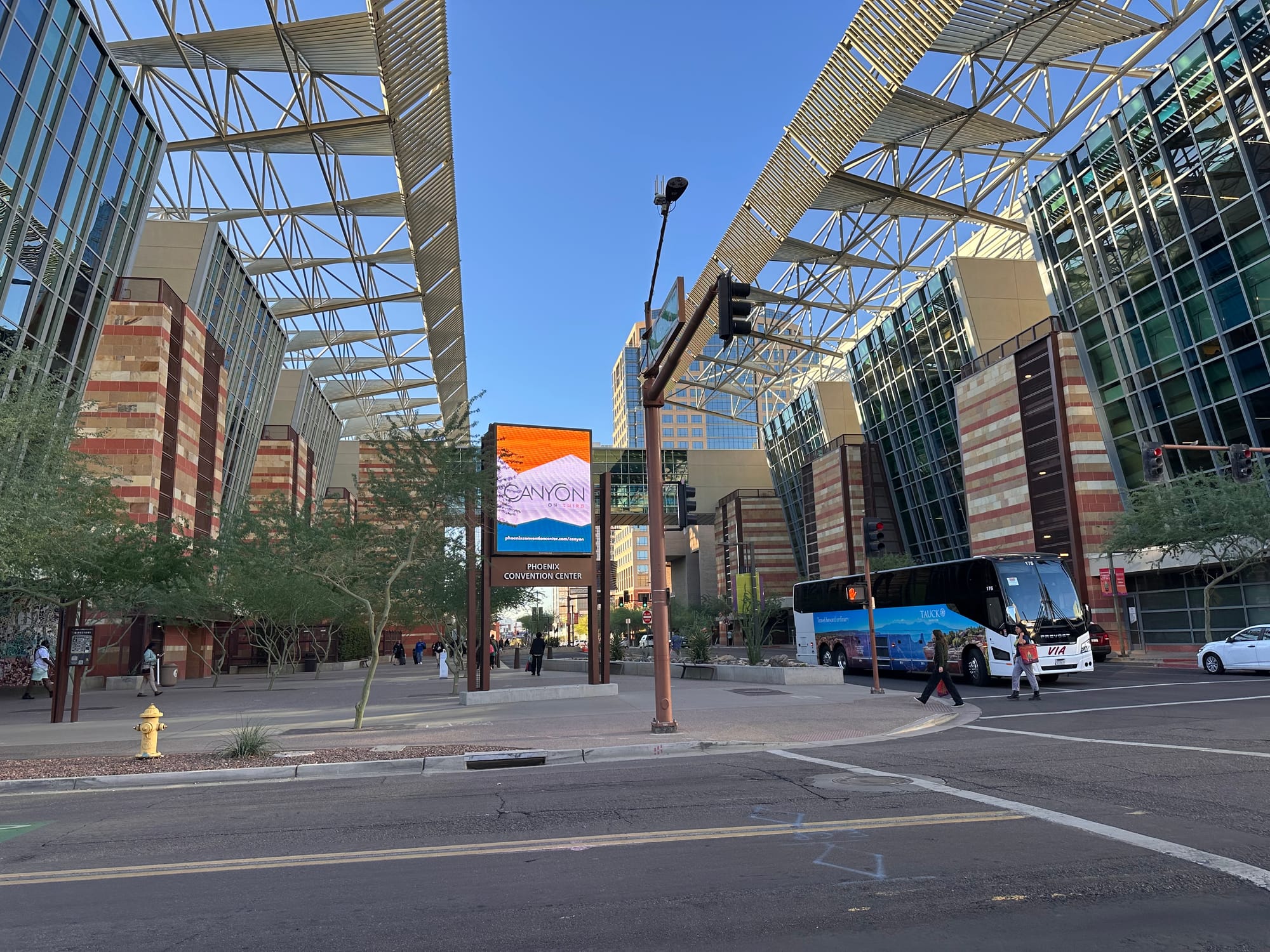

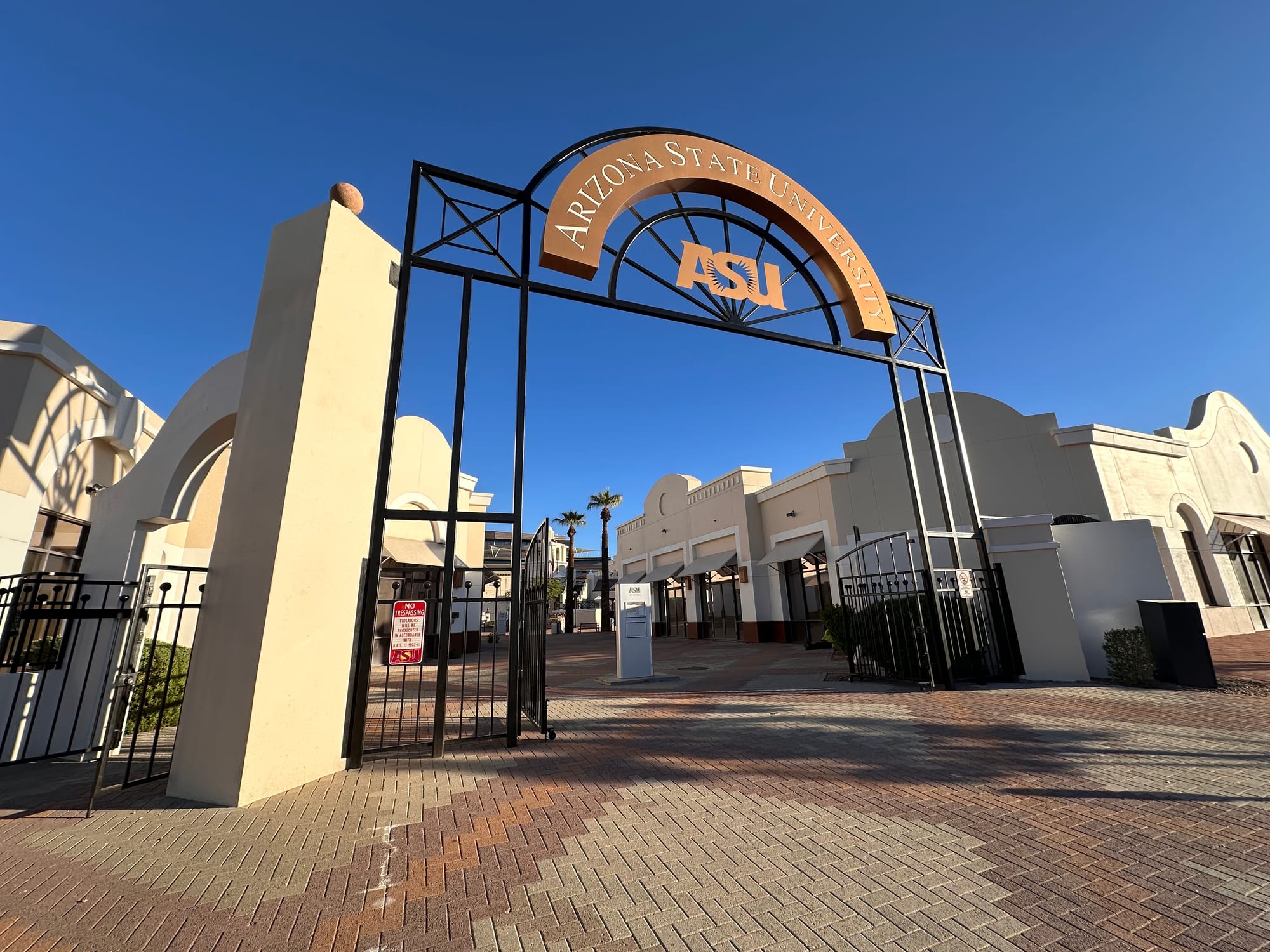
Here are photos from NDiSTEM 2024: (Left to right) The Phoenix Convention Center, the North Ballroom at NDiSTEM, and the Arizona State University Campus.
Vibrant purples, reds, and oranges surrounded me in the heart of Phoenix. Suavemente (by Elvis Crespo) was played over the loudspeakers, and the room was immersed in a symphony of scientists speaking Portuguese, Spanish, Indigenous languages, and English.
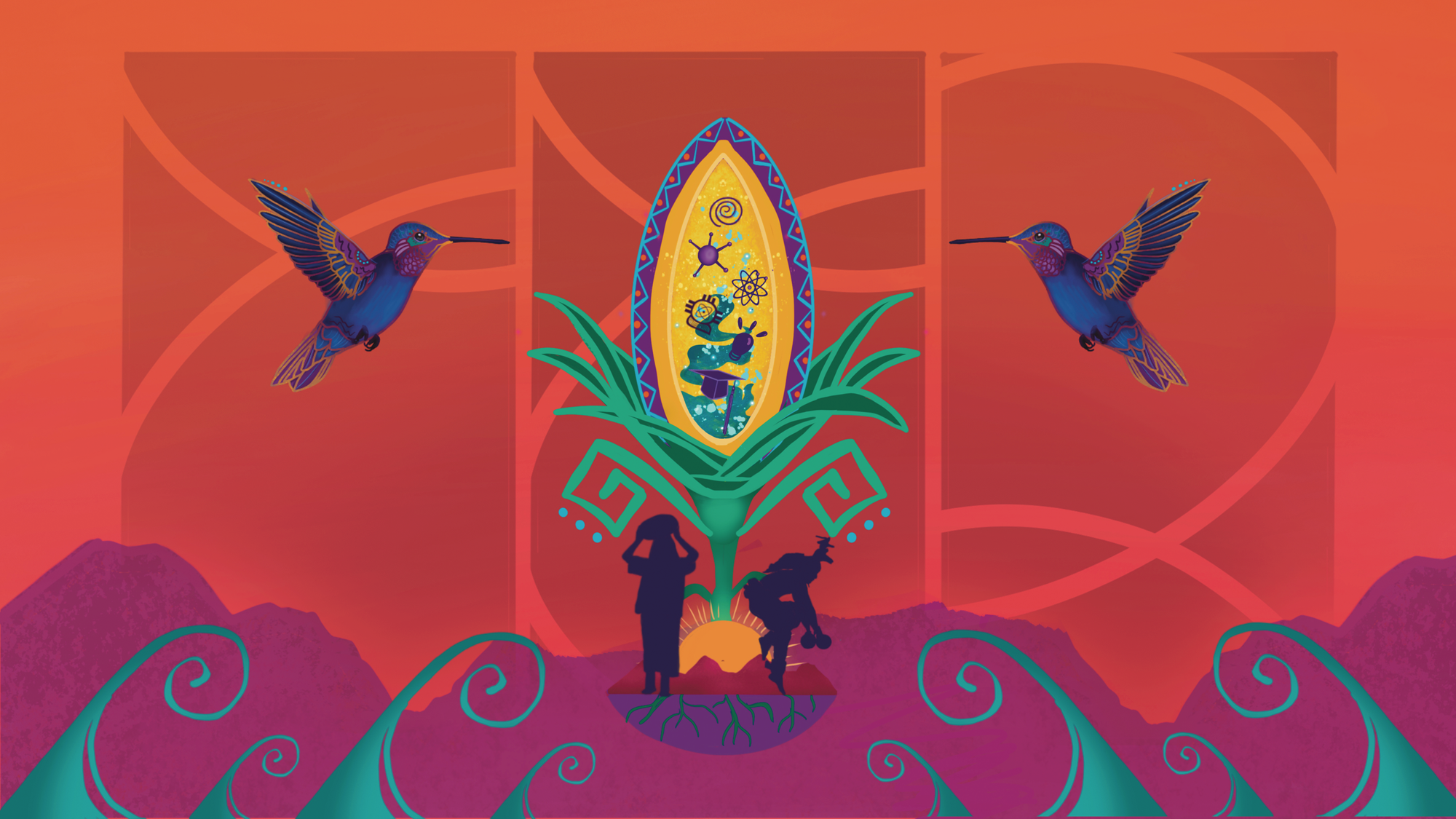
Sitting there, I couldn't help but think back to my elementary school self, studying Physical Science.

I remembered the day a teacher took my work and threw it in the trash:
Don't waste your time, Latina; a pretty girl like you will be pregnant before your Quince.
She wasn't the first or last to be dismissive. Thankfully, for every hater, ten voiced support.
Good or bad, all of these experiences helped bring me here to this moment: NDiSTEM SACNAS on October 31, 2024, surrounded by hundreds of diverse scientists, all considering the same question:
SACNAS: An Attendee's Reflection
Throughout the conference, the honor paid to ancestry and parents was strong among the attendees. This celebration of heritage highlights an essential aspect of bringing our whole selves to STEM: acknowledging the foundations that have shaped us.
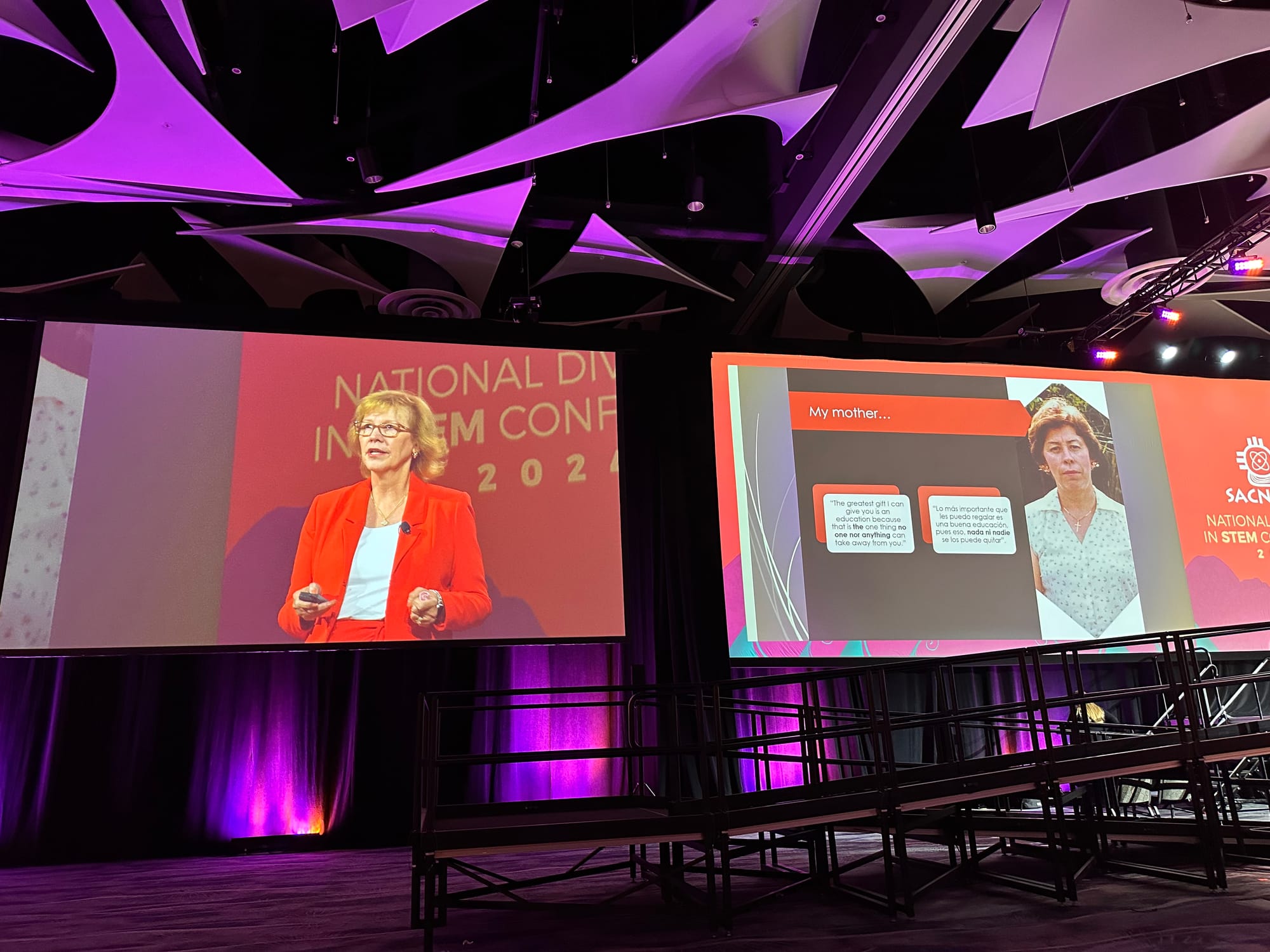
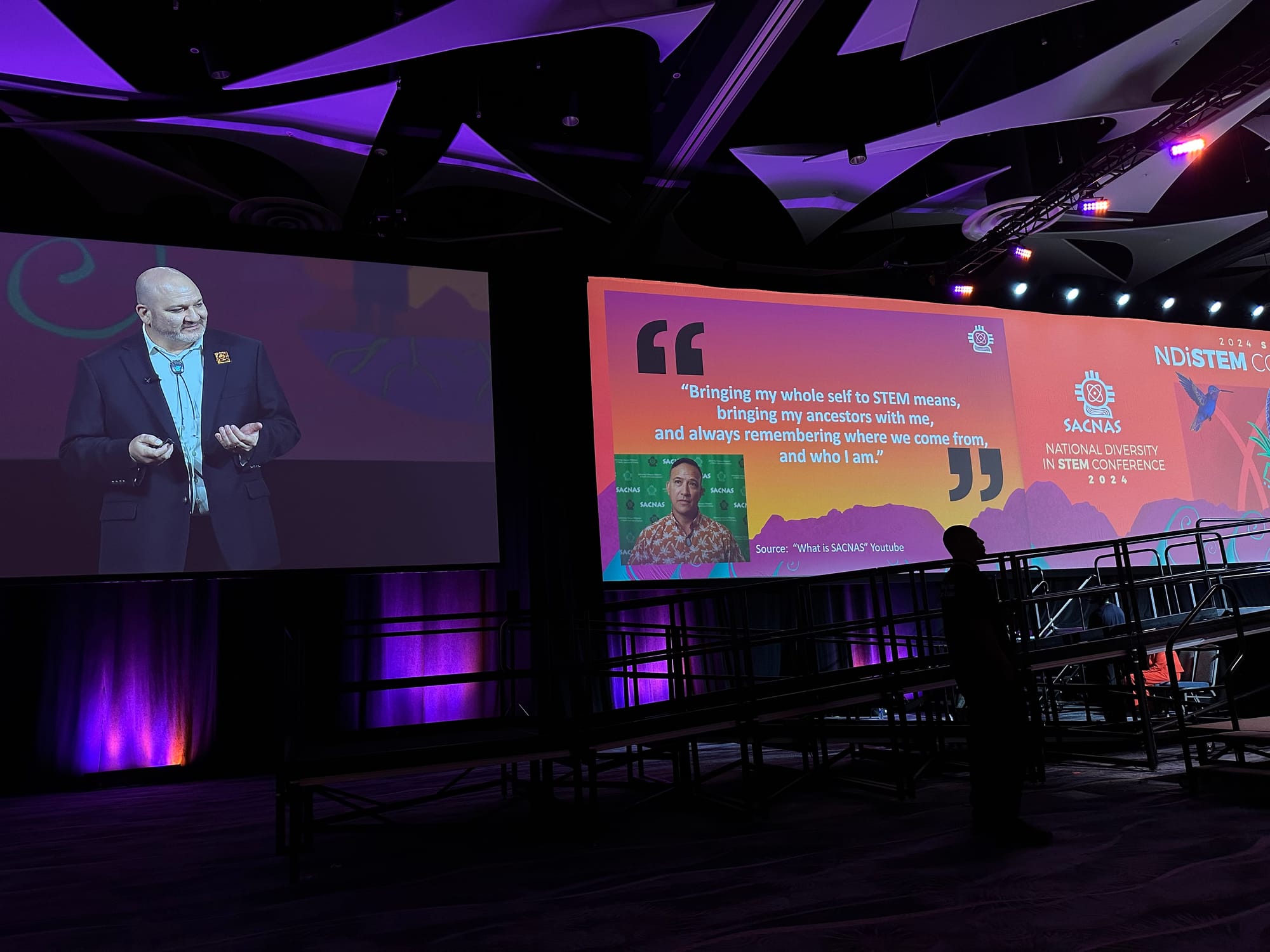
(Left) Keynote Speaker Minerva Cordero, Ph.D., honors her mother, (Right) M.C. Corey Welch, Ph.D., and shares a thoughtful response to "bringing your whole self." Available here.
"The greatest gift I can give you is an education because that is the one thing no one nor anything can take away from you."
Dr. Cordero, quoting her mother
"Bringing my whole self to STEM means, bringing my ancestors with me, and always remembering where we come from, and who I am."
Dr. Welch, quoting a SACNAS attendee
For many, family support is a cornerstone of their journey to STEM.
Recognizing the "Firsts"
Many of the "Firsts"—first-generation Immigrants, Americans, College Students, and Cycle Breakers—experience a nuanced landscape of privilege and pain.
Our journey is complicated with opportunity and challenge: the privilege of education, freedom, and mental healthcare, intertwined with the pain of isolation, cultural dissonance, and generational trauma. The strategies that allowed our ancestors to survive can become the barriers preventing us from thriving.
Our conscience can be heavy with gratitude and grief. I had to learn that compliance (tolerating harm and toxicity) is not gratitude. Instead, gratitude means understanding the context of your family's struggles, choosing to break cycles of harm, and creating a healthier path for future generations. Gratitude can also mean grief if your family cannot walk this healthier path alongside you.
I believe transforming generational pain into personal healing is the HIGHEST form of gratitude for the sacrifices my parents and ancestors made.
Where we cannot carry all aspects of our ancestors' experiences into the future, we can build bridges for our descendants in the present.
And so, maybe bringing all of yourself to STEM can involve both remembrance and transformation:
- Recognizing the survival strategies that protected your ancestors
- Understanding how these strategies may no longer serve you
- Consciously choosing new paths of healing and growth
- Creating new opportunities our ancestors could only imagine
This journey of the Firsts speaks to resilience, often romanticized in academia. But let's be clear: while resilience is a human quality that has enabled survival and progress in the face of adversity, its glorification can perpetuate systems of inequality.
Celebrating Diversity in STEM
At NDiSTEM, I was moved by the sight of many beautiful and diverse scientists who have overcome societal norms to bring their whole selves and ancestors to STEM fields. This emotional experience indeed reinforces what it truly means to belong in science.
As we continue our work in STEM, let's continue creating environments where everyone can bring their whole selves to the table by:
- Continuously reflecting on our own biases and working to overcome them
- Valuing diverse perspectives in research and innovation
- Supporting and uplifting our colleagues from marginalized backgrounds
- Advocating for systemic changes that address barriers to inclusion
The future of STEM is bright. Especially if the energy, passion, and talent I witnessed at NDiSTEM are any indication. I am honored to witness spaces where the full spectrum of human experience is welcomed and celebrated as an integral part of scientific progress. Let's make that vision a reality together.
I wish you the best and hope you can bring your whole self to STEM today.
Working to be whole,
Vanessa Rosa, Ph.D.
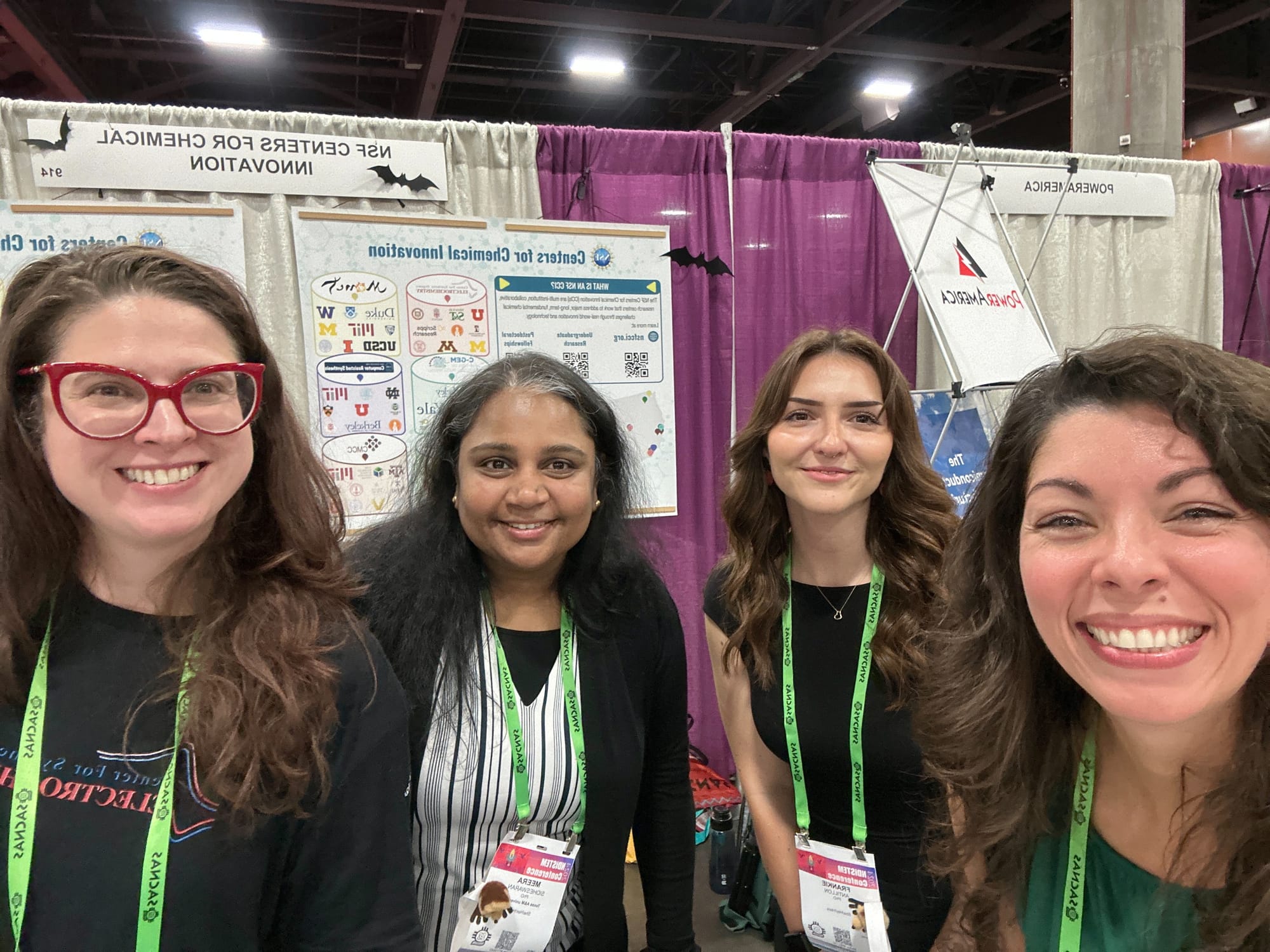
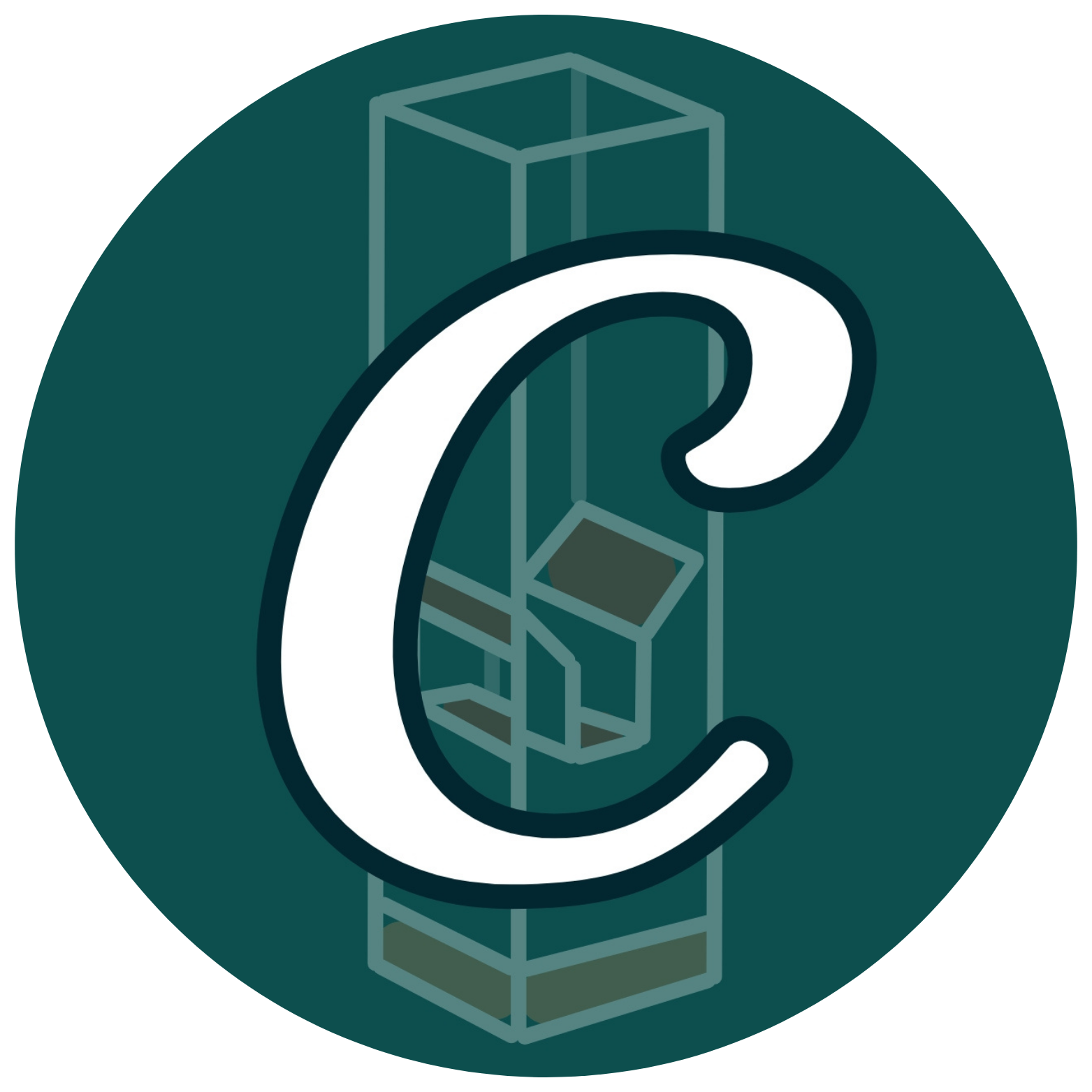
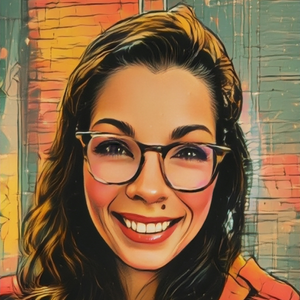
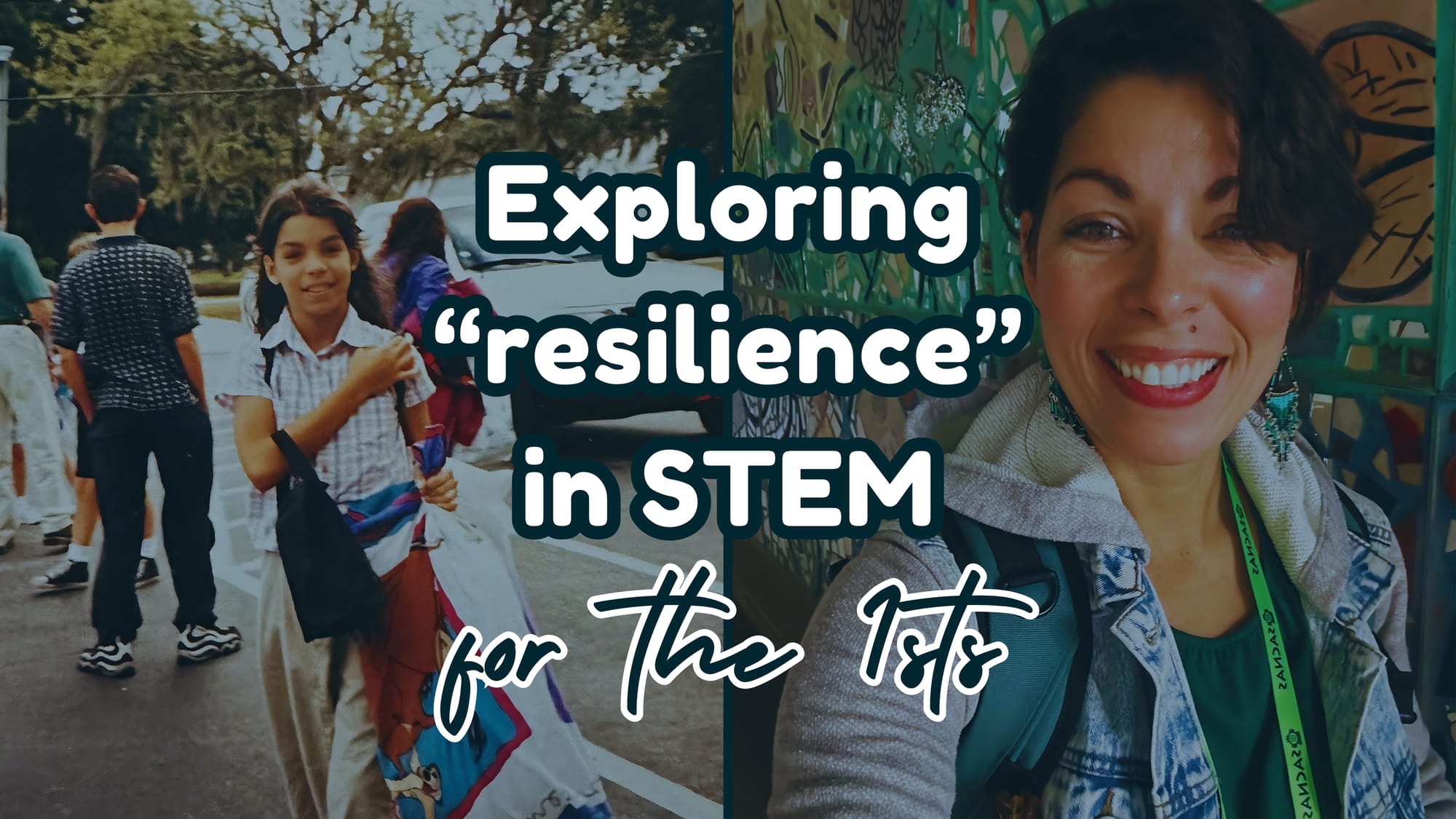
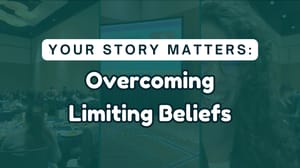


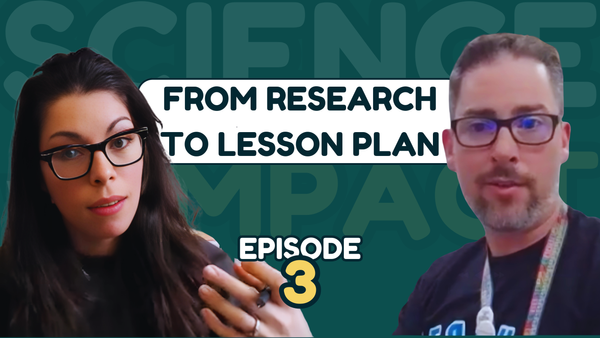


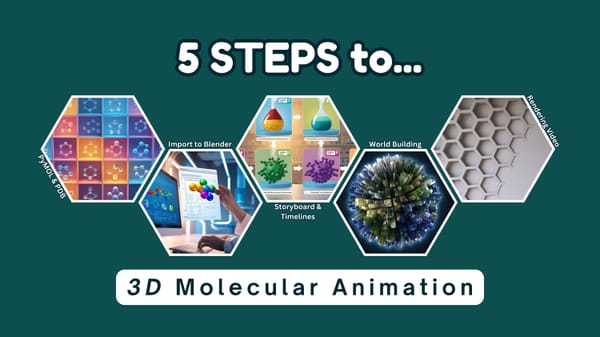
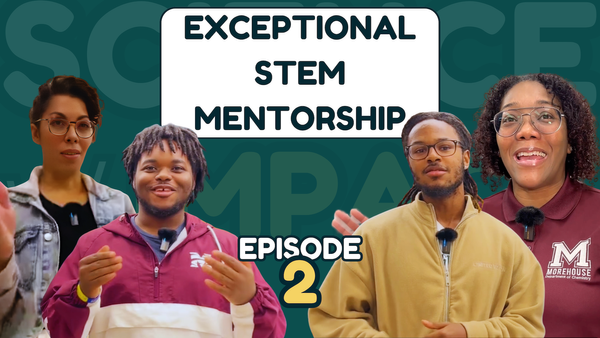
Member discussion